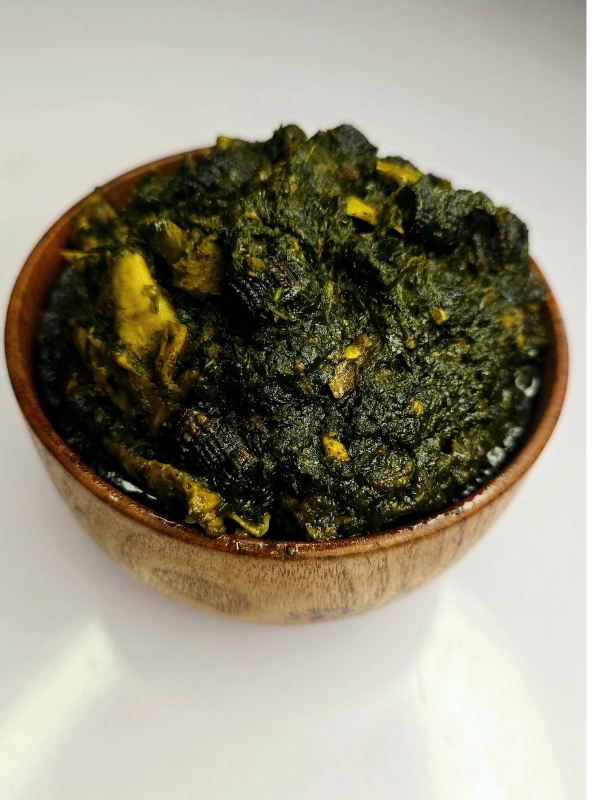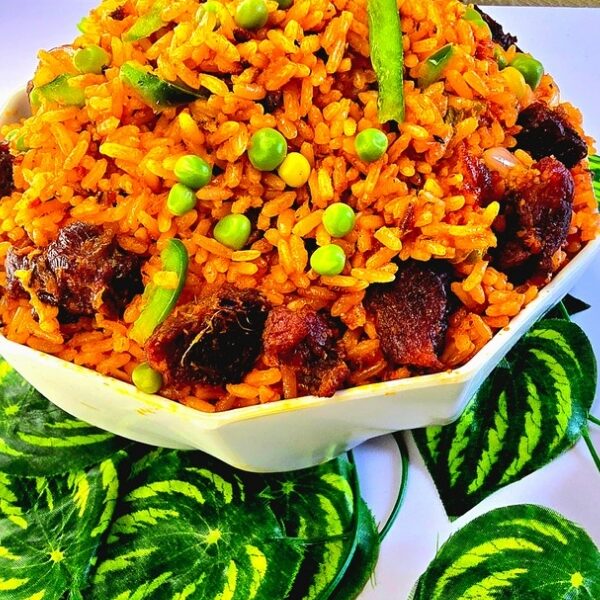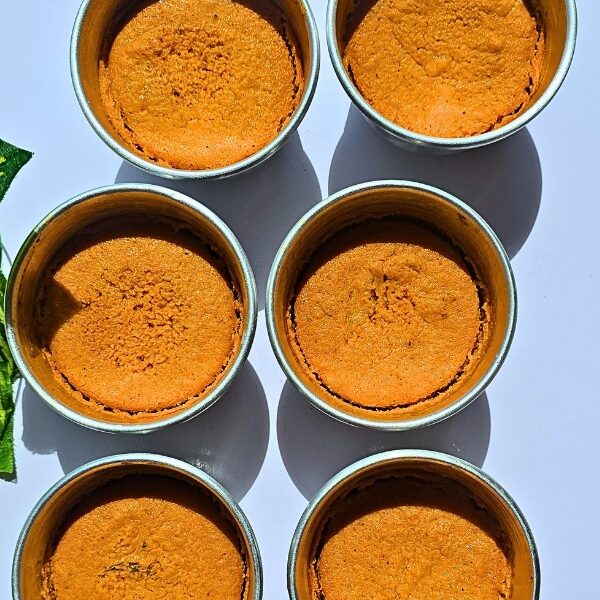How to Cook Afang Soup — A Step‑by‑Step Guide
This is how to cook afang soup the best way ever.
Afang Soup (sometimes spelled “Ukung” or “Okazi soup” in related forms) is one of the most beloved soups in southern Nigeria, especially among the Efik/Ibibio people.
This is one soup I rate higher than the usual vegetable soup because it is so nutrient-filled and the taste of periwinkle which is one of the most important ingredients sure is yummy.
It is nutrient‑dense, full of flavor, and perfect with garri, fufu, eba, or even rice. In this post, I’ll guide you in detail so that even if you’re a beginner, you can arrive at a delicious result.
How To Cook Afang Soup (Why This Recipe Works)
-
It balances waterleaf (for moisture) with afang leaf (for the characteristic texture and flavor).
-
The inclusion of periwinkle, meat, kpomo, dried fish, and crayfish ensures rich umami and depth.
-
Palm oil gives it that glossy, hearty look and taste, while seasoning (stock cube, salt, fresh pepper) rounds the flavor.
-
Good transitions and layering of ingredients help you avoid overcooking or undercooking any component.
Let’s dive into the ingredients, then steps, tips, and serving suggestions.
Ingredients (for about 6–8 servings)
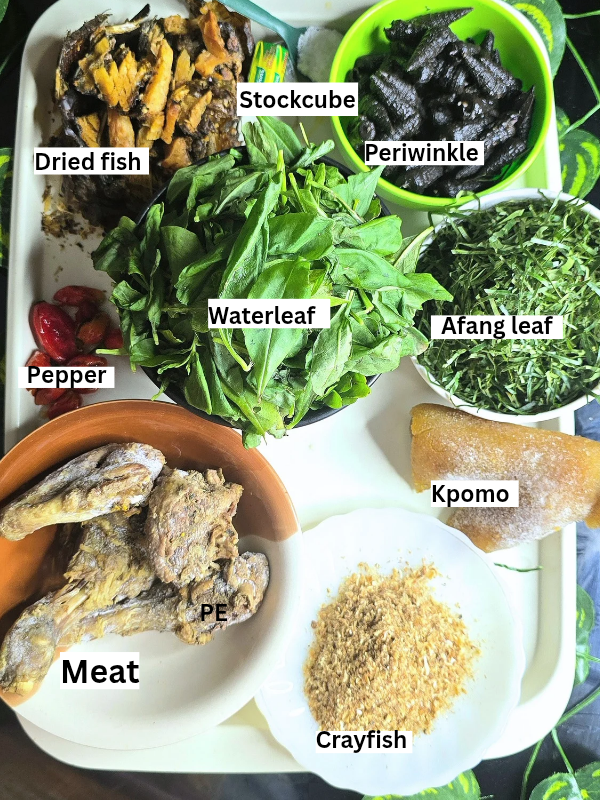
| Ingredient | Approximate Quantity* |
|---|---|
| Waterleaf | 1 large bunch (or ~400–500 g chopped) |
| Afang leaf | 2 medium bunches (or ~300 g) |
| Meat (beef, goat, assorted) | 1 kg (mixed cuts: chunks, shank, etc.) |
| Kpomo (cow skin) | ~200 g, cleaned & cut into cubes/strips |
| Dried fish | 2–3 medium whole dried fish (or equivalent in flakes) |
| Periwinkle (in shell or shelled) | 300 g (if in shells, cook and extract meat) |
| Palm oil | ½ – 1 cup (depending on how “oily” you like it) |
| Ground crayfish | 3 tablespoons |
| Stock cube | 2 cubes (or adjust to taste) |
| Fresh pepper (e.g. Scotch bonnet, habanero) | 2–3, blended or sliced |
| Salt | to taste |
| Water | as needed for cooking (around 2–3 litres) |
* Quantities are approximate; adjust based on how many people you’re feeding.
Pre‑Preparation & Tips On How To Cook Afang Soup
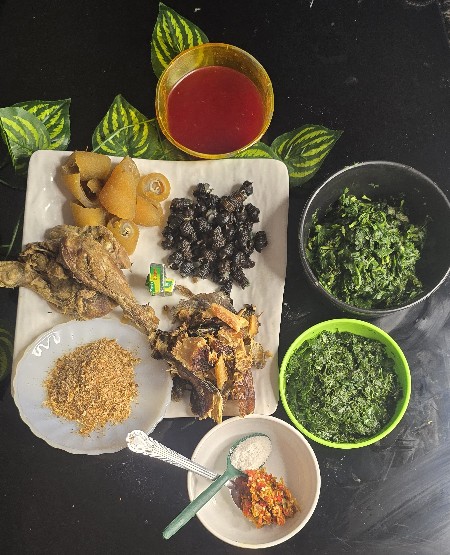
Before cooking, do the following:
-
Wash and prep leaves
-
Wash the waterleaf thoroughly. Chop finely (you want small leafy bits).
-
Wash the afang (okazi) leaf. Traditionally, one slices the leaf very thinly and pound or blend to almost smooth texture. Some people blanch to soften but if it’s coarse, blanch in hot water briefly, drain, and slice.
-
-
Clean and prep meat, kpomo, dried fish
-
Wash your meat cuts, drain, and season lightly (with salt and 1 stock cube) for boiling.
-
Clean kpomo thoroughly (boil separately initially if it’s tough).
-
Rinse dried fish, remove bones or break into manageable pieces.
-
-
Handle periwinkle
-
If periwinkle is still in shells: wash well, cut the bottom tip off with a hard object. Wash again and pick out the cracked shells out
-
If they’re already shelled, wash and set aside.
-
-
Blend or crush fresh pepper
-
Use a blender or mortar & pestle to make your pepper paste. You can mix pepper with a little water or stock.
-
-
Measure crayfish, oil, and seasonings
-
Have your ground crayfish, palm oil, stock cubes, and salt ready so you add smoothly in the cooking process.
-
Cooking Steps
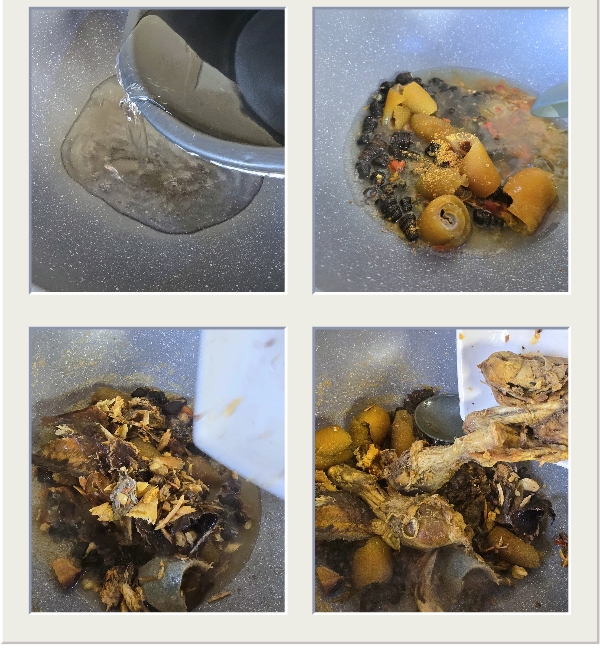
1. Boil the Meats, Kpomo & Dried Fish
-
In a large pot, place your meat, kpomo, and dried fish.
-
Add water (enough to cover the ingredients and leave room for expansion).
-
Add one stock cube (or part thereof) and a pinch of salt.
-
Bring to boil, then reduce heat and simmer until meat is tender (this may take 30–45 minutes depending on meat cuts).
-
Skim off foam or impurities as they surface.
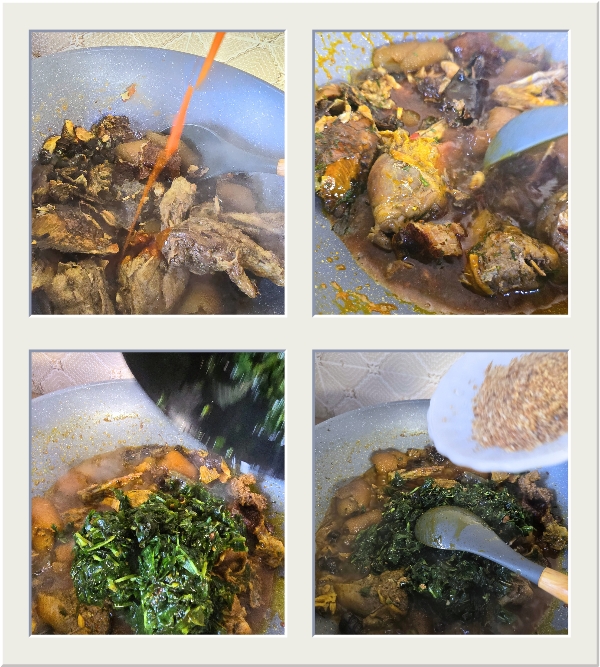
2. Introduce the Palm Oil and Crayfish
-
With meat still simmering, pour in your palm oil. Stir gently to mix into the stock (you’ll see the red/orange hue forming).
-
Add the ground crayfish at this point and stir. Let it cook for about 5–7 minutes in the stock.
This step allows your crayfish flavor to infuse evenly into the broth.
3. Add Fresh Pepper & Adjust Seasoning
-
Add your blended fresh pepper gradually, stirring as you go.
-
Taste the soup and then add your remaining stock cube or salt to adjust flavor.
-
At this point, your “broth” is nearly set—just needs its vegetables and periwinkle.
4. Fold in Waterleaf
-
Add the chopped waterleaf in batches. Because waterleaf releases a lot of moisture, don’t dump it all at once—give time to mix and wilt.
-
Simmer for about 5 minutes so the waterleaf softens and melds into the soup.
Waterleaf gives the soup body and a nice mild “green” flavor; its juices also contribute to the soup’s consistency.
5. Incorporate the Afang Leaf (Okazi)
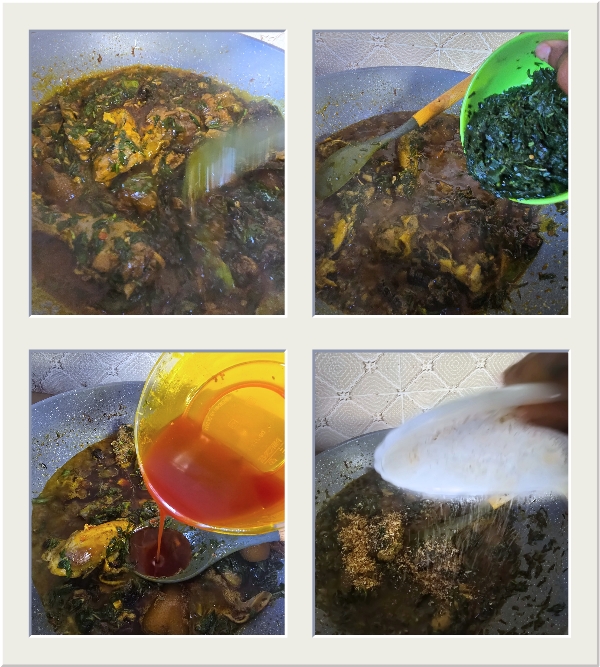
-
Now add the blended or pounded afang leaf. Because afang is tougher, it needs more time to soften.
-
Stir well to distribute evenly throughout the soup.
-
Cover the pot and let it cook on low heat for 7–10 minutes, stirring occasionally to prevent sticking.
The goal is for the afang leaf to soften just enough but still retain a slight chew—that’s part of the texture.
7. Final Adjustments & Finishing Touches
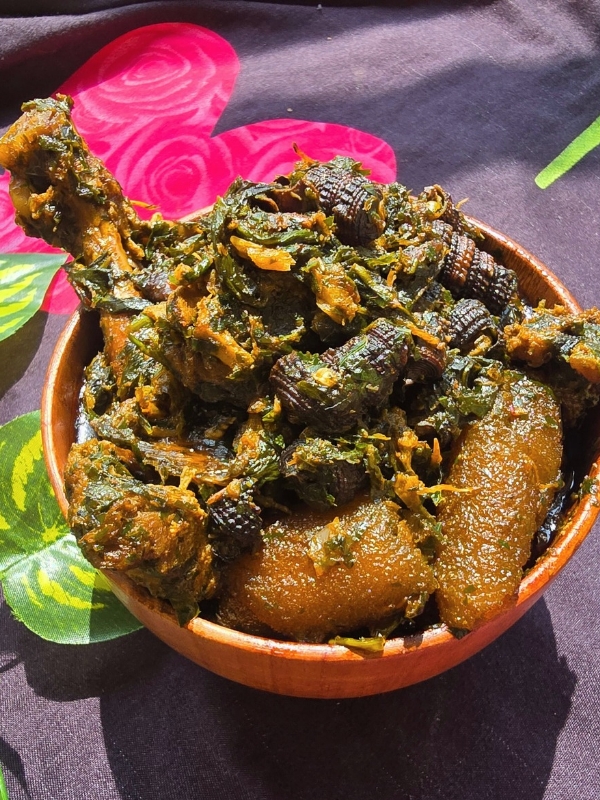
-
Taste again and adjust salt or seasoning if needed.
-
If soup is too thick, you can add a little hot water and stir.
-
If too watery, let it simmer a bit more uncovered to reduce.
-
Let it rest off heat for 2 minutes.
At this point, your Afang Soup is ready to serve.
Serving Suggestions & Tips
-
Serve hot, ideally with eba, fufu, garri, boiled plantain, or rice.
-
Pair it with starchy swallow for a complete local experience.
-
Store any leftovers in the refrigerator (in a sealed container). It can reheat well the next day (just stir occasionally while warming).
Common Mistakes & How to Avoid Them ON How To Cook Afang Soup
-
Overcooking the afang leaf — it can become mushy. Add it toward the end.
-
Adding all the waterleaf at once — it’ll flood the pot with liquid; add gradually.
-
Not cleaning periwinkle well — grit can spoil the texture; wash thoroughly.
-
Not skimming meat foam — it leads to murky, less appetizing broth.
-
Using too little palm oil — Afang tastes best with that rich red hue and smooth mouthfeel.
-
Imbalanced seasoning — always taste before final salt/stock cube adjustments.
Sample Recipe in One View (Summary)
-
Boil meat, kpomo, and dried fish with water, stock cube, salt until tender.
-
Add palm oil and ground crayfish; simmer 5–7 minutes.
-
Add fresh pepper; adjust seasoning.
-
Gradually fold in waterleaf; simmer until wilted (≈5 min).
-
Add periwinkle; simmer a few minutes.
-
Add afang leaf; cover and simmer 7–10 minutes.
-
Taste, adjust salt, reduce or thin consistency, rest, and serve.
Final Words On How To Cook Afang Soup
Cooking Afang Soup is not just about following steps—it’s about layering flavors, respecting ingredient textures, and timing your additions carefully. With your waterleaf, periwinkle, meat, fresh pepper, stock cube, crayfish, afang leaf, palm oil, kpomo, dried fish, and salt, you have everything you need for a hearty, authentic pot.
Once you master this base method, you can experiment by using assorted meats or seafood, adjust spice levels, or tweak the ratio of leaves to proteins. But the core principles remain the same: pre‑prep, gradual layering, correct timing, and constant tasting.
Enjoy your cooking and may your next bowl of Afang Soup be full of flavor, richness, and satisfaction!
